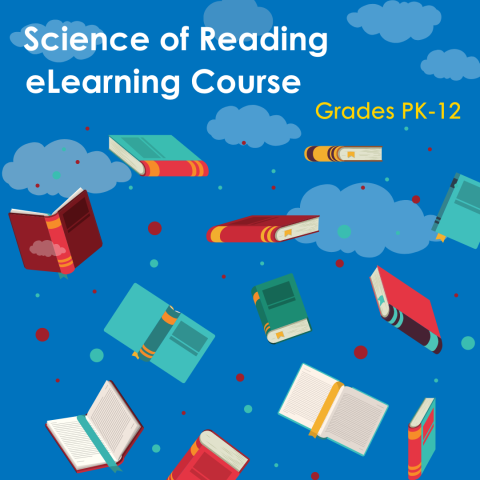Science of Reading eLearning Courses - Single Teacher Seat
Science of Reading eLearning Courses - Single Seat
Professional Development - School Year Term: 01.01.2024 to 06.30.2025
- Single Seat(s) $249.00 per seat
- 20 seat minimim $125.00 per seat
- 100 seat minimim $110.00 per seat
- 400 seat minimim $95.00 per seat
- 800 seat minimim $90.00 per seat
- Emerging Reader Course - Grades PK-1
- Developing Reader Course - Grades 2nd-12th
- 9 professional development contact hours
- 5 Weeks of instructional lessons
Are Your Classroom Practices Aligned With the Science of Reading?
Our Science of Reading eLearning Courses are an exceptional professional learning opportunity. These workshops help teachers understand what researchers know about reading acquisition, word storage, reading difficulties, and the skills and knowledge it takes to become a fluent, highly capable, decoder. With this knowledge, teachers are better prepared to nurture students along their journey to becoming strong decoders and fluent readers. Bring the Science of Reading to life in your classrooms.
Efficient. Affordable. Entertaining. Empowering. Compared to many other professional learning courses, our courses are a fraction of the time, a fraction of the cost, but they leave teachers with deep knowledge and practical functional solutions! Select from two levels: Emerging Reader for PreK - 1, and Developing Reader for Grades 2-12
Goals of this training:
- Straightforward exploration of the research behind how the brain learns to read
- Information about orthographic mapping and how words are stored for automatic, effortless retrieval
- A practical, scientifically aligned, evidence-based foundational skills approach
- Can be taught across a wide range of ages, ability levels, and settings (even distance learning environments)
- Valuable insights to help you unlock the English Code for all students and put students on the path to becoming strong decoders
- Strategies to align scientific research with classroom practices
Here's what you'll learn:
The Science Behind How Young Children Learn to Read
Topics covered include:
- What the Science of Reading is and how this body of research has an impact on teacher decision making and student learning
- The how, the what, and the why of how the brain learns to read, store, and retrieve words
- Why the alphabetic principle is a key concept to understanding the structure of the English Code
- Impact of early instruction alignment with the Science of Reading on long term success
Practical Strategies to Implement the Science of Reading with Emerging Readers
Topics covered include:
- What the Science of Reading looks like in everyday instruction
- Clear, concise language to easily deliver concepts to students
- Ready to use instructional routines to provide consistency in your instruction
- Strategies to ensure your emerging readers will establish a firm foundation in the subskills that lead to strong decoding and fluent reading
- Leveraging phonemic awareness and single-syllable word-level knowledge to easily attack multi-syllabic words
- Teaching skills, not words, to allow students to experience long-term success and easily build a robust orthographic lexicon
Reaching Mastery and Automaticity through Effective Practice, Differentiation, and Diagnosing Decoding Needs
Help children reach mastery and automaticity through effective practice, differentiation, and diagnostic assessments. Topics covered include:
- Key practice routines and strategies to promote automaticity with single-syllable and multi-syllabic words
- Providing meaningful feedback to build confidence and endurance in reading complex word structures
- Differentiating amounts and types of practice to meet the needs of all learners
- Using diagnostic decoding assessments to answer these key questions: Which students are struggling with decoding? What types of words are they struggling with? What is the source of the underlying confusion?





